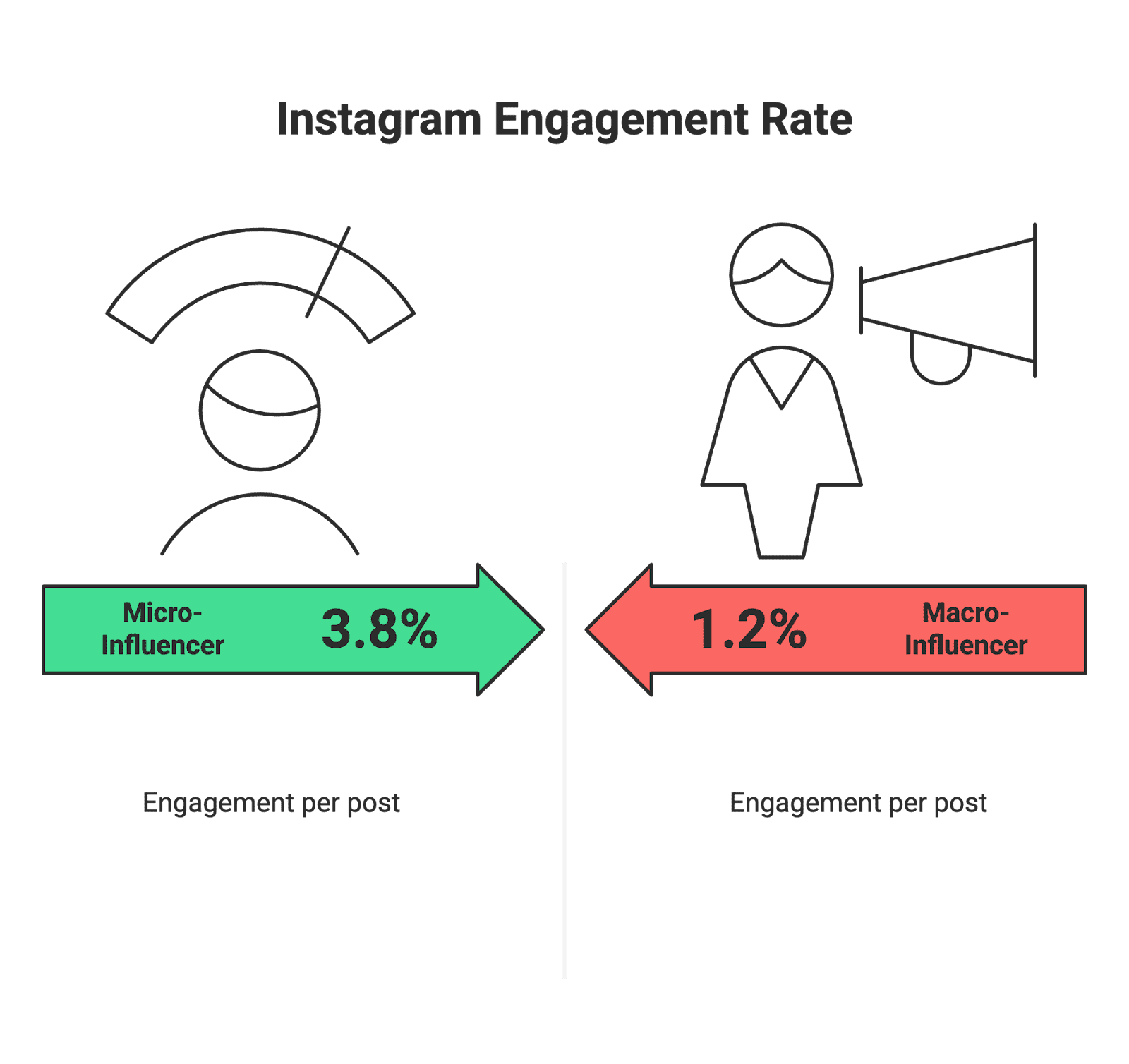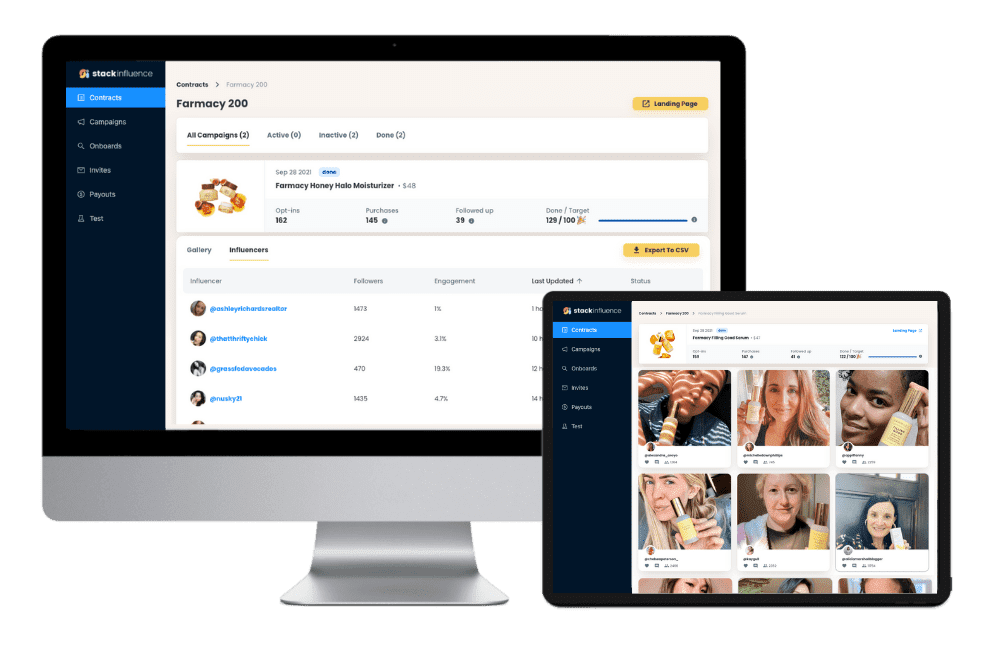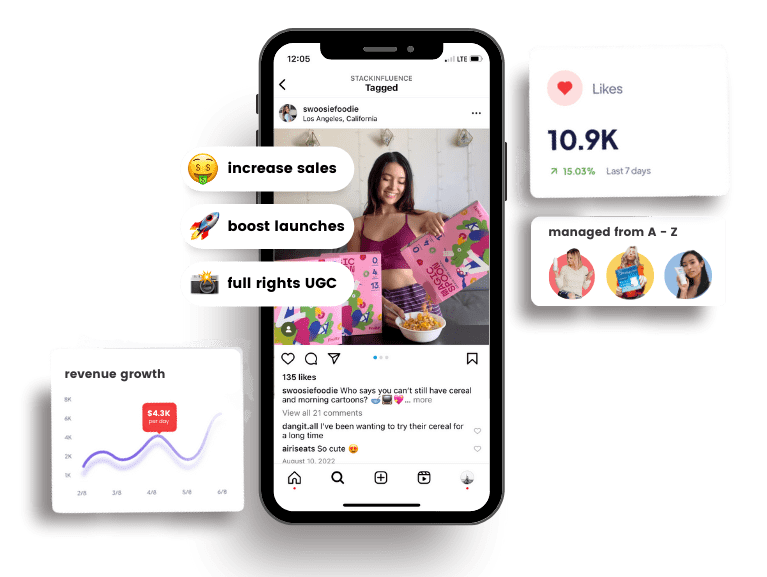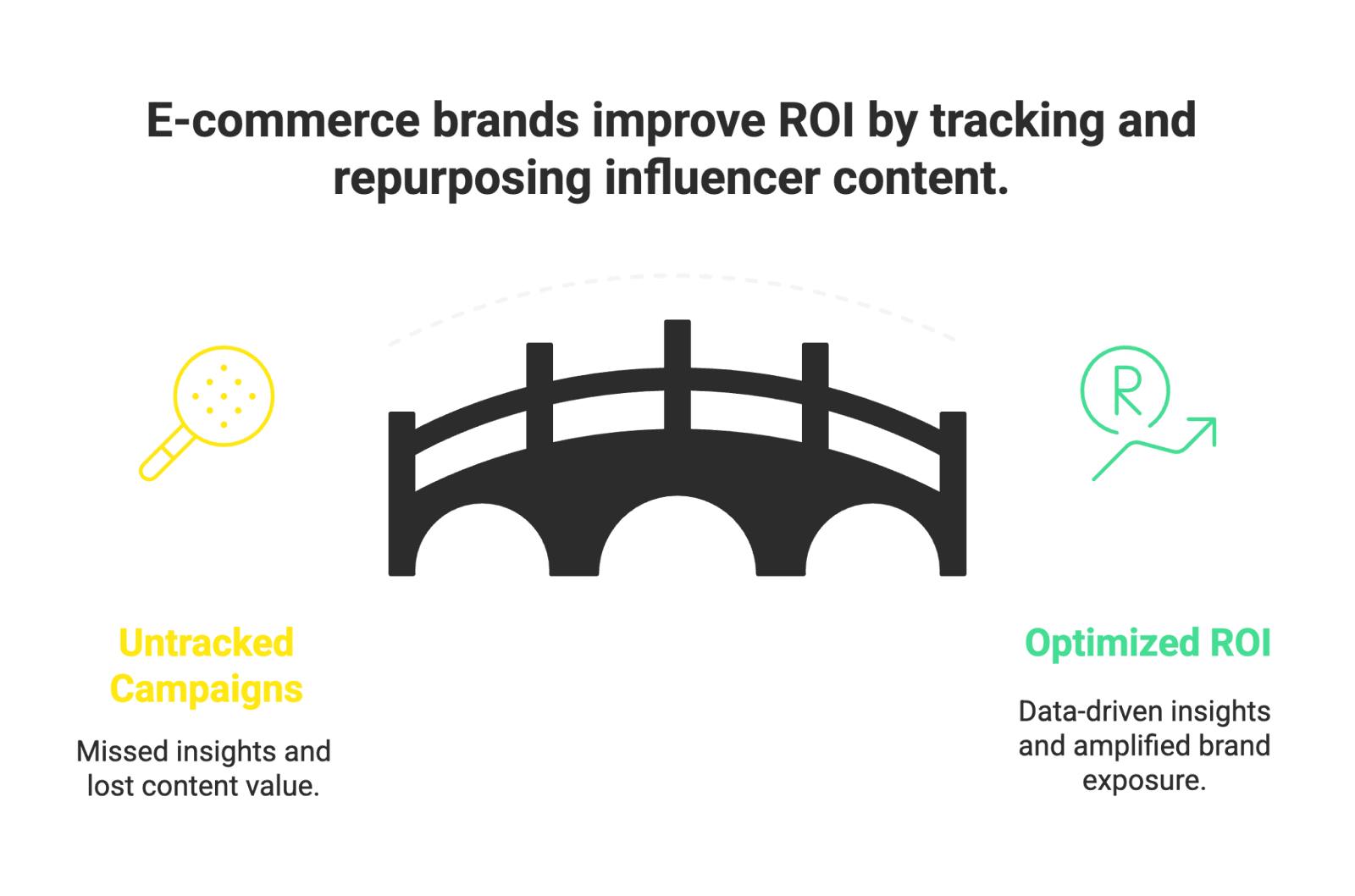5 Micro-Influencer Marketing Mistakes E-Commerce Brands Should Avoid
13th
August, 2025
Influencer Marketing
Amazon Marketplace
Artificial Intelligence
TikTok Tips
Micro-influencer marketing can be a game-changer for e-commerce businesses and Amazon sellers, offering authentic content and niche audience reach. However, diving into influencer campaigns without a solid plan can lead to wasted budget and disappointment. In fact, research in 2025 found 53% of influencer campaigns fail to meet their goals due to common pitfalls. To help your online store avoid these missteps, we’ve compiled five key micro-influencer marketing mistakes that brands should steer clear of – and how to do it right. From selecting the perfect content creators to leveraging user-generated content (UGC) effectively, keep these tips in mind to make the most of your micro-influencer partnerships.
1. Not Setting Clear Campaign Goals and KPIs
One of the biggest rookie mistakes in influencer marketing is launching a campaign without clear goals or KPIs. If you don’t define what success looks like – whether it’s increasing brand awareness, driving traffic, or boosting product sales – you’ll have no way to measure performance. Going in without specific objectives is like spending money with no roadmap. Not only does this make it impossible to gauge ROI, it also leaves influencers guessing what you expect. They can’t hit a target if you haven’t set one.
Why this is a problem: Without clear goals, you might end up focusing on vanity metrics (like a temporary spike in likes or follows) rather than metrics that matter to your business (like conversions or revenue). Many brands are now realizing the importance of setting defined targets for campaigns – 63% of businesses include ROI-focused targets in influencer contracts as of 2025. If you skip this step, you risk falling behind more strategic competitors.
How to avoid it: Define specific, measurable goals for each micro-influencer campaign. For example, decide whether your aim is to increase website traffic by 20%, generate 200 new email leads, or boost Amazon product sales by 15% during the campaign. Identify the key performance indicators (KPIs) that align with that goal (e.g. referral traffic, conversion rate, engagement rate, promo code redemptions) and track them closely. Setting SMART goals (Specific, Measurable, Achievable, Relevant, Time-bound) provides a clear success benchmark. This way, if you’re an Amazon seller sending out freebies to influencers, you’ll know if those mentions led to more product page views or reviews. The bottom line: a clear goal turns your campaign from a shot in the dark into a focused marketing strategy.
2. Choosing Influencers Based on Follower Count Alone

When scouting for influencers, it’s easy to be seduced by big follower numbers. Many e-commerce brands make the mistake of equating follower count with influence. Partnering with an Instagram creator just because they have 100k+ followers may seem like a ticket to quick reach – but chasing vanity metrics can backfire. A large following doesn’t guarantee engagement or sales. In reality, an influencer with 500,000 followers might have a very low engagement rate or an audience that isn’t relevant to your niche. For instance, a beauty brand won’t benefit from an influencer whose massive following is mostly interested in gaming or politics.
Why this is a problem: Focusing on quantity over quality can burn your marketing budget on the wrong audience. It’s well documented that as follower counts go up, engagement rates tend to drop. Mega influencers and celebrities often see very little interaction from their broad audience – and some accounts inflate their follower counts with bots or fake followers. What really drives conversions is trust and engagement, which smaller creators often have in abundance. A micro-influencer with 5,000 highly engaged followers in your niche can generate more interest (and actual sales) than a macro-influencer with 500k indifferent followers.
Average engagement rates on Instagram: micro-influencers (~10k–100k followers) see around 3.8% engagement per post on average, versus roughly 1.2% for macro-influencers. Smaller creators often spark more likes, comments, and shares relative to their audience size.
The chart above illustrates this disparity – a micro-influencer’s post typically gets a much higher percentage of their followers interacting than a macro-influencer’s post. In practical terms, if you partner with several micro-influencers (each with a tight-knit, loyal audience), you’re likely to get more total engagement and genuine interest than one shout-out from a single “big name” who isn’t closely connected to their followers. Moreover, micro-influencers and content creators often operate in specific niches (fashion, fitness, gadgets, etc.), meaning their followers are precisely the consumers most likely to care about your product. For an e-commerce seller, relevance beats sheer reach every time.
How to avoid it: Prioritize influencer fit and engagement over follower count. When evaluating micro-influencers, check their engagement rate (ratio of likes/comments to followers) and the quality of interactions. A good rule of thumb: an engagement rate around 2–5% is strong for micro-influencers, whereas macro influencers might only have ~1% engagement. Look at who their followers are – do they match your target customer profile in terms of demographics and interests? Also review the content itself: Is the influencer’s niche aligned with your product category? For example, if you sell organic snacks, a micro-influencer who posts about healthy living and has an audience of fitness enthusiasts is a far better fit than a random celebrity account. By doing this research, you ensure you’re choosing quality over quantity – an influencer who can actually move the needle for your brand, not just one who looks popular on paper.

Unlock the Power of Micro Influencers and Elevate your Brand Today!

3. Failing to Vet Influencers for Authenticity
Not all that glitters in influencer-land is gold. Another common mistake is taking an influencer’s stats at face value without vetting for authenticity. In the rush to collaborate, some brands don’t scrutinize whether an influencer’s following and engagement are real. This can be a costly oversight: influencer fraud (buying fake followers or using bots for engagement) is a known issue, and it can siphon off your marketing dollars with no real return. Brands lost an estimated $1.3 billion in 2019 to fake influencer fraud – roughly 15% of total spending on influencers that year. As an e-commerce business, especially if you’re giving away products or paying fees, the last thing you want is to invest in a creator who’s padding their numbers or won’t deliver genuine exposure.
Why this is a problem: Collaborating with unvetted influencers can lead to paying for “phantom” audience members. If half of an influencer’s followers are bots or inactive accounts, your sponsored post might be reaching far fewer real people than promised. Similarly, some micro-influencers join engagement pods or leave spammy comments to boost their stats artificially. Partnering with these types of accounts means your campaign results (clicks, sales, or brand lift) will likely fall flat. For Amazon marketplace sellers, it could also mean sending free products to people who don’t have real influence – essentially giving away inventory for nothing. Beyond wasted budget, there’s a reputational risk too: you don’t want your brand associated with shady practices or fake-looking engagement.
How to avoid it: Do your due diligence before signing any influencer. Vetting a micro-influencer can be straightforward with a few checks:
- Check follower-to-engagement ratio: If an account has 50,000 followers but only gets ~50 likes per post, that’s a red flag. Healthy accounts have engagement that feels proportionate to their audience size (e.g. hundreds of likes on that follower count, not just a handful). Extremely low engagement suggests many followers could be fake or disinterested.
- Examine the comments and audience quality: Scroll through their recent post comments. Are the comments meaningful and on-topic (indicating real fan interest), or do you see lots of generic spam (e.g. “Nice pic!” from random accounts)? A barrage of irrelevant or bot-like comments is a sign of fake engagement. Also, skim their follower list for obviously fake profiles (no profile picture, nonsense usernames, etc.).
- Use tools if available: There are influencer auditing tools (some free, some paid) that analyze accounts for suspicious patterns. For example, they can detect sudden spikes in follower growth (could mean purchased followers) or a high percentage of accounts that look like bots. Tools like SparkToro’s fake follower audit, HypeAuditor, or social media management platforms can help automate this check.
- Start small if unsure: If you have any doubts about an influencer, consider doing a small trial collaboration instead of a big, pricey campaign. For instance, give them a unique discount code or affiliate link and see if they generate any sales or significant engagement. This “test run” can save you from larger losses; if they don’t perform or seem sketchy, you can cut ties early.
By thoroughly vetting potential micro-influencers, you ensure you’re partnering with authentic content creators who can truly influence their audience. It might take a bit of extra time up front, but it will protect your brand from fraud and maximize the chances that your investment leads to real results (like genuine clicks and conversions).
4. Micromanaging the Content and Stifling Creativity
On the flip side of not guiding at all, some brands err by overly micromanaging their influencers’ content. It usually comes from good intentions – you want your brand represented “just right” – but handing a creator a rigid script and a long list of do’s and don’ts can backfire badly. Remember, micro-influencers built their following through their unique style, voice, and personality. If you, as a brand, dictate every word and creative detail, the content will likely feel forced and inauthentic. Audiences are quick to sense when a post reads like a bland advertisement rather than the influencer’s genuine voice.
Why this is a problem: When brands impose overly strict creative control, influencer content loses its authenticity – the very quality that makes influencer marketing effective. The post ends up sounding like a scripted ad, which not only bores the audience but can also erode trust. As one report noted, when an influencer’s content is obviously over-scripted by a brand, followers tend to tune out or even feel alienated. No one likes to see their favorite creator suddenly talking like a corporate commercial. If the micro-influencer’s enthusiasm and originality are muzzled, the campaign won’t resonate with viewers, leading to poor engagement and wasted effort. Essentially, you might get a perfectly “on-brand” post, but if it comes off as fake, it won’t drive results.
How to avoid it: Find a balance between providing guidance and giving creative freedom. Instead of dictating every word, give influencers a clear brief with your must-have key points and let them take it from there. Here are a few tips to keep in mind:
- Provide a flexible framework: Share the campaign’s message, product benefits to highlight, any required hashtags or disclosures (#ad), and brand guidelines (e.g. family-friendly language or no competitor mentions). But stop short of writing a word-for-word caption for them. For example, rather than insisting an influencer says “This is the best protein bar I’ve ever tasted, it changed my life!”, you could brief them with: “Please mention the protein bar’s 100% natural ingredients and how it fits into your routine.” This gives them room to phrase it naturally.
- Trust their creative style: Remember that influencers know their audience better than you do. Allow them to present your product in their own voice – whether that’s through a funny skit, a heartfelt story, or a candid review. Their followers will respond better to content that feels real and personal, even if it’s a bit rough around the edges, rather than a polished ad. Today’s social media users actually prefer content that feels like genuine user-generated content; behind-the-scenes snippets or honest opinions often outperform overly polished promos.
- Collaborate and listen: Make the content creation a two-way street. Encourage the influencer to pitch their ideas on how to showcase your product. If they push back on something in your brief (“Posting five Stories slides with repetitive product shots will bore my audience”), take that feedback seriously. By collaborating, you’ll get a final post that still meets your marketing needs and feels organic to the creator’s feed.
In short, give your micro-influencers “freedom within a framework.” You ensure brand alignment by setting the guardrails (important facts, messaging priorities, legal requirements like FTC disclosures), but within those guardrails, let the creator’s personality shine. The content will come out much more authentic and engaging, which ultimately delivers better results for your campaign. After all, you partnered with this influencer for their creativity and connection with their audience – so let those qualities work in your favor.
5. Not Tracking Results or Repurposing Influencer Content

The campaign is over, products were posted… now what? A major mistake many e-commerce brands make is failing to track the results of influencer campaigns and not repurposing the content created. Micro-influencers often produce fantastic photos, videos, and reviews about your product – a goldmine of user-generated content – but if you don’t save and reuse those assets, you’re leaving value on the table. Likewise, if you don’t analyze how each influencer’s post performed, you miss insights that could improve future campaigns. Influencer marketing isn’t a “launch and forget” tactic; the follow-through is just as important.
Why this is a problem: Not tracking results means you have no idea which influencers or content pieces actually drove sales, traffic, or engagement. This makes it impossible to calculate ROI or learn what worked best. For example, if you gave 10 micro-influencers discount codes but never checked how many sales each code generated, you wouldn’t know who was most effective. Without that data, you might repeat mistakes like investing in an influencer who actually didn’t deliver results. Additionally, failing to record what content was posted and securing rights to it means you can’t legally or logistically reuse those great photos or videos elsewhere. You paid (or gave product) for that content – using it only once on the influencer’s social feed severely limits the return. Considering that influencer-generated content often resonates well with consumers, not repurposing it is a lost opportunity for extra brand exposure and credibility.
Over half of marketers (52%) repurpose influencer content across three or more marketing channels. That means the best practice is to take the authentic posts your micro-influencers create and reuse them – on your website, product pages, social media, emails, or ads – to amplify their impact.
As the statistic above shows, most savvy marketers extend the life of influencer content. For instance, if a micro-influencer made a glowing video review of your gadget, you could embed that on your product page or feature a clip in an Amazon listing video. If they took a great lifestyle photo with your fashion item, that image could be republished in your Instagram feed, included in an email newsletter, or even used as part of a Facebook ad campaign (with proper permissions). Brands that do this see concrete benefits – one study noted a 20% higher click-through rate when using UGC content in email campaigns. The trust and relatability of a real user’s content can outperform traditional studio shots or ad copy. By not repurposing, you miss out on these extra conversions and brand trust signals.
How to avoid it: Implement a system to track performance and organize content from every influencer collaboration. Here’s how:
- Track key metrics: Set up unique tracking links or discount codes for each influencer if possible, so you can attribute sales or traffic. Monitor their posts’ engagement (likes, comments, shares) and note any spikes in web analytics or Amazon referrals during the campaign. This data will tell you who your top-performing micro-influencers are, and what content style worked best.
- Maintain a content library: Keep an organized record of all influencer posts about your brand. For example, create a spreadsheet or dashboard listing each influencer, a link to their post, the date, and the engagement stats. Also note your usage rights (did your agreement allow you to repost their photo? Use it in ads? Most micro-influencers will grant usage rights for brand marketing if agreed upfront). Save the actual content files – download the images or videos, especially the high-performing ones, and store them in a folder or asset library.
- Repurpose, repurpose, repurpose: Don’t let that great content fade after a 24-hour Story or one-off post. Integrate the best influencer content into your other marketing efforts. You can create a “Testimonials” section on your site with real Instagram photos and quotes from influencers, use unboxing videos in your product listings or ads, turn a how-to post into a blog mention, etc. For Amazon sellers, this could mean adding influencer lifestyle images to your Amazon storefront or using influencer quotes in product descriptions (within Amazon’s guidelines). Be creative – one piece of content can often be sliced and diced for multiple channels.
Finally, make sure you’re allowed to reuse content by having proper agreements in place. It’s wise to specify content usage rights in your influencer contract (e.g. you can repost their content on your own socials, or use images in ads for 6 months, etc.). That way, you won’t run into legal issues when you repurpose their work.
By diligently tracking outcomes and reusing influencer-generated content, you maximize the ROI of your micro-influencer campaigns. Instead of a one-time boost, each collaboration becomes a lasting asset: you gain both valuable performance data and quality marketing content. For brands that find this process overwhelming, using an influencer marketing platform can help. For example, Stack Influence – a micro-influencer marketing platform – automates much of this workflow, from finding the right creators and sending out products to managing posts and tracking results. Leveraging such tools ensures no post slips through the cracks and every piece of UGC can be captured and utilized. Whether you do it manually or with software, the key is to treat influencer content and data as strategic resources, not afterthoughts.

Unlock the Power of Micro Influencers and Elevate your Brand Today!

Conclusion to 5 Micro-Influencer Marketing Mistakes E-Commerce Brands Should Avoid
Micro-influencers and content creators offer e-commerce and Amazon sellers a powerful way to reach customers through authentic, relatable content. By avoiding these common mistakes – from poor planning and misguided influencer selection to lack of follow-through – your brand can fully capitalize on the benefits of micro-influencer marketing. Remember that successful campaigns are built on strategy, genuine partnerships, and smart execution. Define your goals, choose your collaborators wisely, foster authenticity, and make data-driven decisions. When done right, micro-influencer marketing can drive not just likes but clicks, conversions, and loyal customers who trust your brand. It’s one of the modern growth hacks for online sellers – so learn from these pitfalls, adapt your approach, and watch your e-commerce business thrive with a little help from the right influencers. Good luck, and happy collaborating!

By William Gasner
CMO at Stack Influence
William Gasner is the CMO of Stack Influence, he's a 6X founder, a 7-Figure eCommerce seller, and has been featured in leading publications like Forbes, Business Insider, and Wired for his thoughts on the influencer marketing and eCommerce industries.
Want new articles before they get published? Subscribe to our Awesome Newsletter.
stack up your influence
turning creativity into currency
our headquarters
111 NE 1st St, Miami, FL 33132
our contact info
[email protected]
stack up your influence
turning creativity into currency
our headquarters
111 NE 1st St, 8th Floor
Miami, FL 33132


